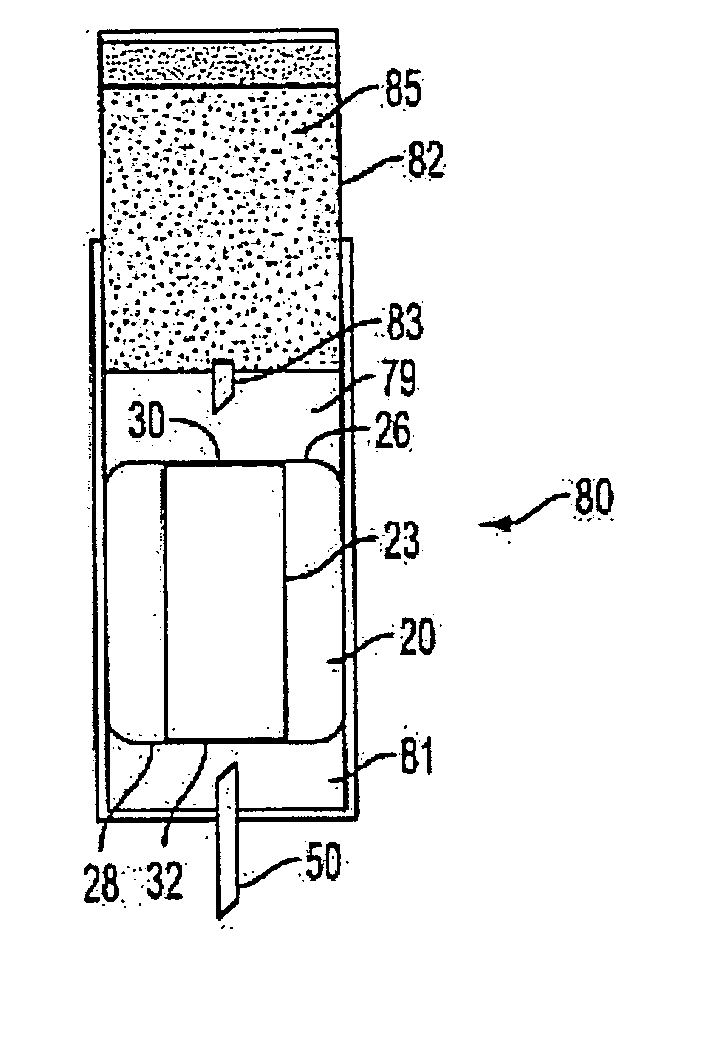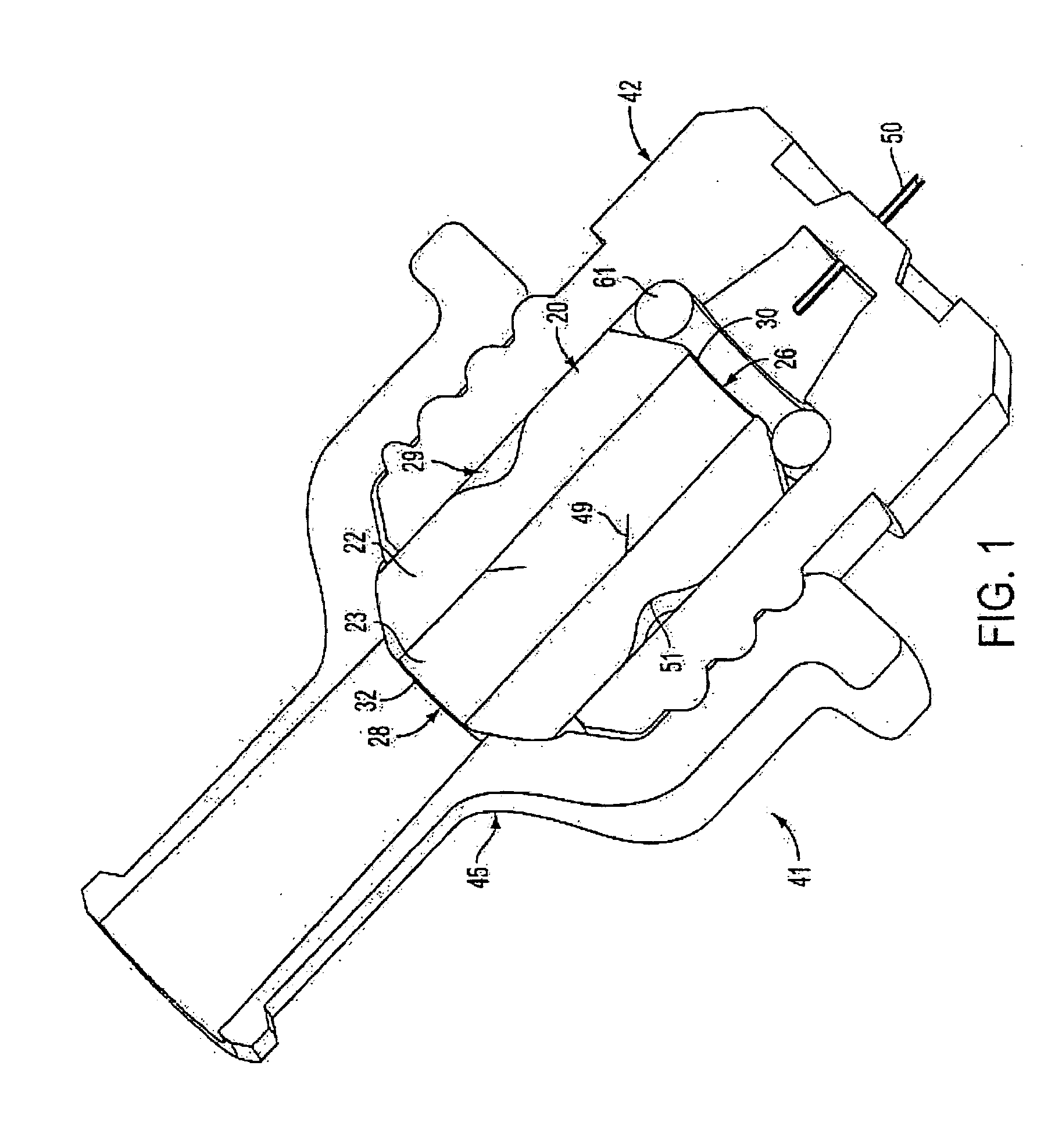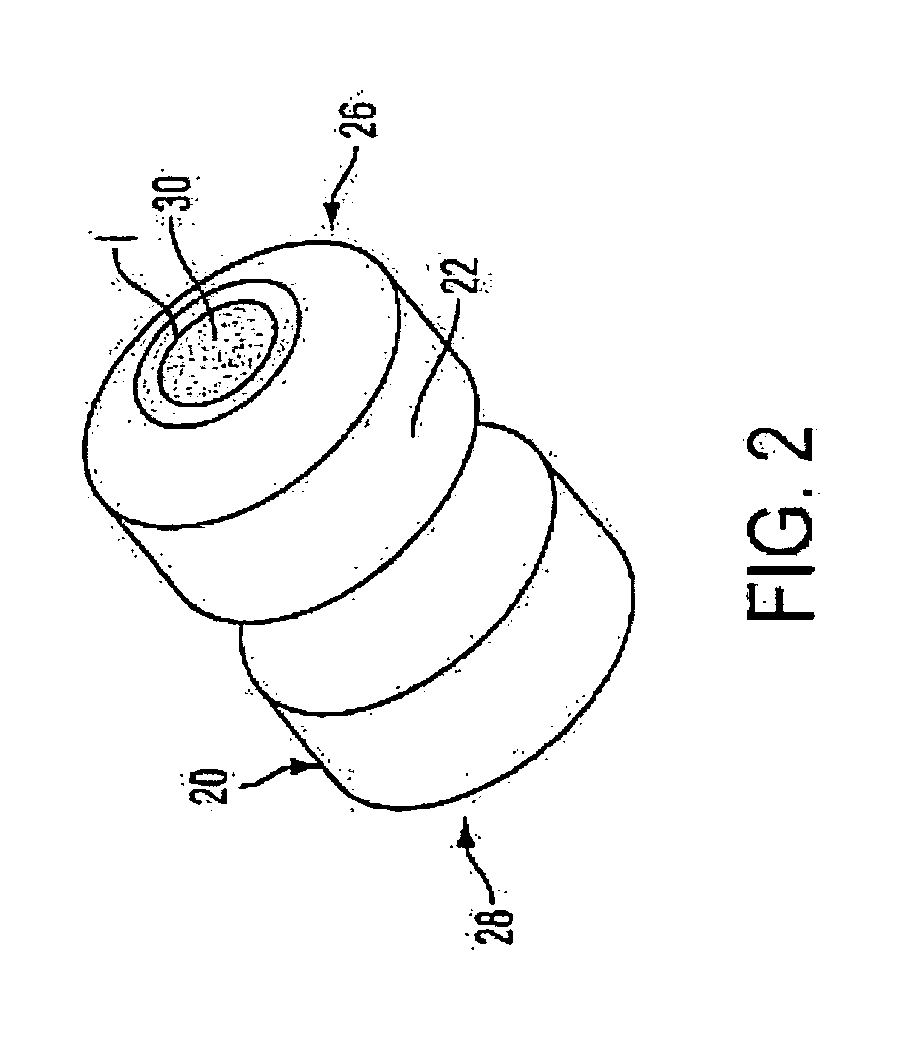Medicament microdevice delivery system, cartridge and method of use
a micro-device and cartridge technology, applied in the direction of micro-needles, infusion needles, breathing protection, etc., can solve the problems of rarely being targeted, variable clinical results, and not being able to achieve significant absorption advantages
- Summary
- Abstract
- Description
- Claims
- Application Information
AI Technical Summary
Benefits of technology
Problems solved by technology
Method used
Image
Examples
example 1
[0066] Spray-Freeze Dried (SFD) Insulin was prepared in the manner according to U.S. Patent Application Ser. Nos. 60 / 419,959 and 10 / 299,012, filed Oct. 22, 2002 and Nov. 19, 2002, respectively, the contents of which are herein expressly incorporated by reference. Single dosage amounts of a powder formulation of insulin were placed in the cartridge of devices in accord with that shown in FIG. 1, and sealed. The cartridge was then placed in the chamber of the device so that the ends aligned with the inlet and outlet. A 1.0 mm 34-gauge needle with an additional side port outlet was employed as the microdevice. A glass micro syringe was filled with diluent and positioned within the Luer fitting. The micro delivery device assembly was placed against the flank of a diabetic swine and the syringe plunger depressed, reconstituting the insulin powder, which was then injected into the animal. Blood samples were taken at 5, 10, 15, 20, 30, 40, 50, 60, 75, 90, 120, 150, 180, 240, 300, and 480 m...
example 2
[0069] In order to quantify the level of emitted dose, medicament was injected into euthanized swine using devices in accordance to FIG. 1. The devices contained SFD Insulin / Trehalose at doses of 10.9 to 13.09 UI and were attached to diluent reservoirs containing either 25 μl, 50 μl, 100 μl, or 150 μl of diluent. The diluent used was 0.9% sodium chloride Injection USP. The devices were rinsed with 500 μl EDTA-solution after each injection. The rinses were analyzed using HPLC to determine nonemitted dose. The emitted dose was calculated by difference. Results are shown in FIG. 9. The emitted dose at 25 μl is 79.6%. The emitted dose at 100 μl is 92.6%. There is a loss of only 13% emitted dose with a 75% reduction in diluent volume. This reduction in emitted dose injection volume is beneficial to reduce the discomfort associated with injection.
[0070] The insulin formulations used were stored in a dessicator cabinet at room temperature for 4 months (Ins / Tre) and 10 months (Ins only).
example 3
[0071] Luciferase plasmid (pCMV-Luc from Aldevron, 2 μg / mL in H2O) was spray freeze-dried and loaded into cartridges by the process previously described. Each cartridge was loaded to contain 10 μg of plasmid. The loaded cartridge was inserted into a housing, which was in direct communication with a snap-fit adapted 1cc tuberculin syringe. The housing itself was integrated with a microabrader device in accord with that shown in FIG. 4, with a fluid path terminating in a port opening just above the abrading surface, so that reconstituted medicament flowed onto the skin in front of the abrading surface during administration. The syringe was loaded with 250 μl of normal saline. After compensation for device dead-space, the amount of reconstituted SFD-plasmid delivered was approximately 50 μl. The syringe was slowly depressed, immediately reconstituting the SFD-plasmid and releasing a 50 μl drop of plasmid solution onto the shaved back of a Brown Norway Rat. The microabrader device was t...
PUM
 Login to View More
Login to View More Abstract
Description
Claims
Application Information
 Login to View More
Login to View More - R&D
- Intellectual Property
- Life Sciences
- Materials
- Tech Scout
- Unparalleled Data Quality
- Higher Quality Content
- 60% Fewer Hallucinations
Browse by: Latest US Patents, China's latest patents, Technical Efficacy Thesaurus, Application Domain, Technology Topic, Popular Technical Reports.
© 2025 PatSnap. All rights reserved.Legal|Privacy policy|Modern Slavery Act Transparency Statement|Sitemap|About US| Contact US: help@patsnap.com



